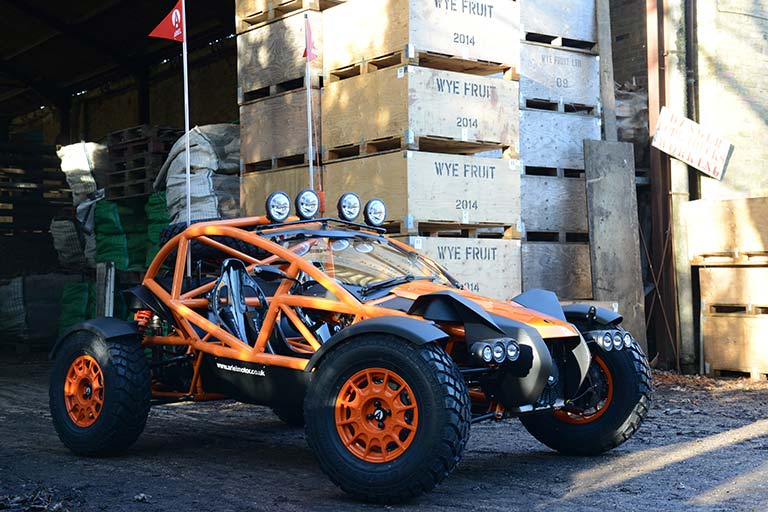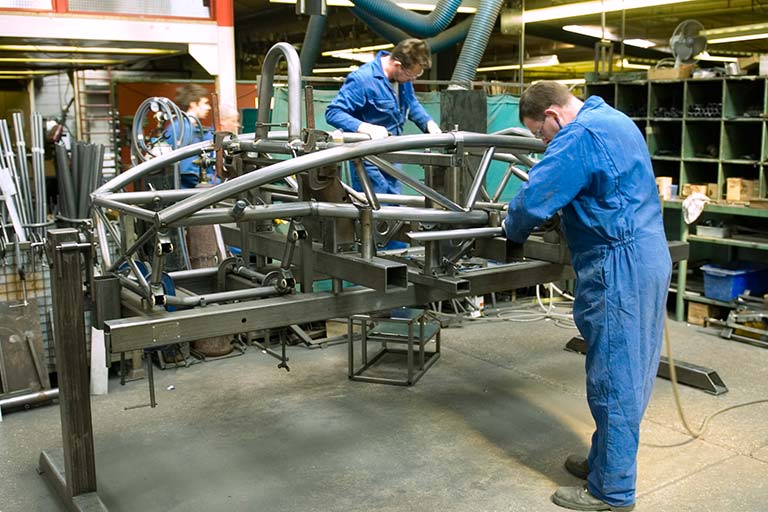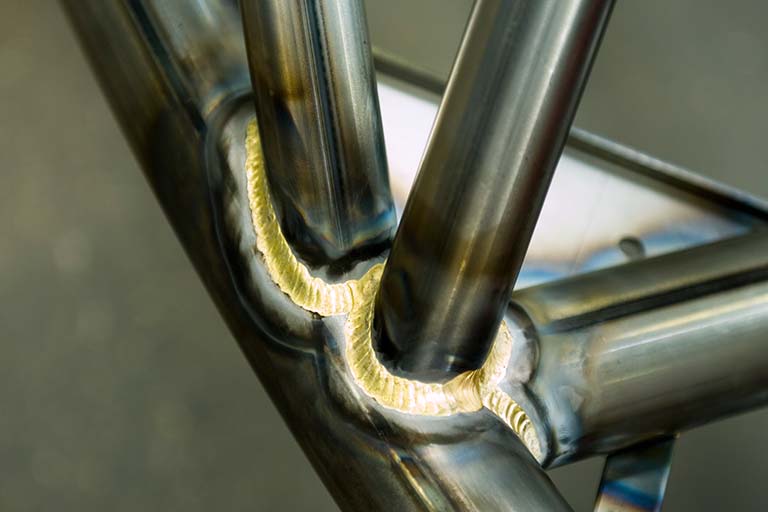The Ariel Nomad utilises the unique qualities of steel to create one of the lightest, most durable multi-purpose sports vehicles in the world
There are cars that claim to be versatile, while some even call themselves multi-purpose vehicles. However, the truth is most of us use most of them in exactly the same way: to get from where you are to where you need to be, via the medium of the public road.
But what if there was a car that took a different view? One that looks past the narrow ribbons of tarmac to the wider world beyond? A car that pays no attention to the usual requirement of providing a working tool, but liberates its driver to treat it entirely as a toy? That car is this car, the Nomad, made in tiny quantities and largely from steel by the delightfully free-thinking Ariel Motor Company in the south-west of England.
The philosophy behind the Nomad is simplicity itself to explain, yet requires a car with such a rare skill-set no-one has built anything like it before. The idea was no more than to build a car that was fun everywhere. And ‘everywhere’ doesn’t mean merely country lanes and race tracks, but in deserts and dunes, and on forest tracks and dirt roads. Everywhere a car can go.
 A finished Ariel Nomad parked outside the Wye Fruit company in Herefordshire
A finished Ariel Nomad parked outside the Wye Fruit company in Herefordshire
To call it a success is putting it mildly. Because Ariel insists on building all its cars not only entirely by hand, but also by a single individual who will often invite owners to come and see their own car being constructed. It all takes a lot of time and, because Ariel has no desire to be anything other than an ultra-low volume manufacturer, waiting lists tend to be lengthy.
If you want your car ready for the summer, Ariel advises ordering it in the winter, not the winter before the summer you want it, but the one before that… A new floor has just been installed in the production hall that Ariel hopes will enable it to increase production by 50% from 100 to 150 cars per year. To provide some perspective, Nissan’s factory at the other end of the country in Sunderland produces more cars than that in three hours.
The Nomad […] explodes the myth that a steel car is an inherently heavy car.
One of the more extraordinary side effects of this strategy is that an Ariel retains almost all its value. “So long as it’s looked after properly,” says Ariel’s Henry Siebert-Saunders, who has seen the Nomad project through from inception to delivery, “there is hardly any depreciation. It takes a long time to build one of our cars properly and to the expected levels and people tend to hang on to them once they’ve taken delivery, so in fact there just aren’t that many cars out there. So when they do come up on the second hand market, owners tend to charge accordingly…”
The choice of steel as the principal construction material for the Nomad, and its older, track-honed sister, the Ariel Atom, was barely a choice at all. “We did look at other materials when we started work 20 years ago,” says Ariel founder Simon Saunders, “but we always came back to steel. Other materials were lighter, but they were more expensive to buy, which would have raised the price of a car we always intended to be affordable. They’d have been more difficult to work with, and to get the same level of strength you’d need to use much more, so the weight saving would have been largely negated.”
 Workers constructing a Nomad chassis at the Arch Motor and Manufacturing workshop
Workers constructing a Nomad chassis at the Arch Motor and Manufacturing workshop
Saunders is a graduate of the London Central School of Art, who in former lives has worked as a designer for everyone from the Conran Group to Porsche and Aston Martin, and central to his vision was a car where form didn’t follow function or vice versa, but went hand in hand. This is why the tubular steel structure of both the Atom and Nomad is the dominant design theme of both cars. Steel is also used throughout the rest of the car, particularly for almost all the suspension components.
“A key advantage of steel is how quickly and easily it can be repaired,” says Saunders. “People use our cars not only all over the world, but in every kind of environment, including the race track, which means some are going to get crashed. Steel not only provides them with the protection they need, we can also just cut away the damage and soon the car is as good as new again.”
“You might wonder how more exotic materials might withstand the punishment our owners dish out over time. With steel you know already.”
Simon Saunders
One car came in having had such a substantial accident not a single wheel was attached to the remains. Not only was the driver unhurt, the car was quickly rebuilt and returned to its owner.
The Nomad also explodes the myth that a steel car is an inherently heavy car. Ariel says the Nomad weighs just 670kg, or about half the mass of a mid-spec family hatchback. And the Nomad has to be built to withstand a largely off-road life where it may well spend much of its time being yumped and jumped, flying through the air before touching down again. With no such requirements, the Atom weighs a trifling 520kg.
A drive in a Nomad, especially the top specification supercharged model, is an experience likely to live with you for some time. In the dry, it will accelerate to 60mph from rest in 3.1sec; try to do the same in the wet and you’ll need to pass through first, second, third and fourth gears, because only once you hook fifth can you be sure the wheels won’t spin the moment you put your foot down.
 A close up of a welded joint on the Ariel Nomad chassis
A close up of a welded joint on the Ariel Nomad chassis
With no doors, no roof and, to be honest, no real bodywork, there are few driving experiences purer than this. Leave the road and so long as you fit the optional chunky off-road tyres it will go almost anywhere. Siebert-Saunders says the car is so light and has such long travel suspension it’ll go almost anywhere you might take a Land Rover Defender, despite only having two-wheel drive. And he speaks as a Defender owner.
But once the initially bewildering pace of the Nomad has normalised in your brain just a little, other senses emerge, first being how well it also stops and steers but then, overwhelmingly, just how well built this car is. Nomads and Atoms are anything but inexactly designed kit cars thrown together by a bunch of amateurs with more enthusiasm than skill.
External suppliers provide every component, which Ariel’s highly trained technicians then slowly and expertly turn into Nomads and Atoms. I’ve been driving Ariels for over 15 years on road, track and rally special stages and, to date, I’ve not known a single thing go wrong with any of them.
Steel plays its part in this, too. “You might wonder how more exotic materials might withstand the punishment our owners dish out over time. With steel, you know already,” says Saunders. “Cars come to us for service that we’ve built in the earliest days of the business, and we always have a thorough look over them, just to see how they’re standing the test of time. And the truth is, they hold up incredibly well.”
For Ariel, steel was the only choice for the Nomad. The most versatile recreational car ever built, created from the most versatile construction material in the world. It sounds like a match made in heaven and whether you are on or off the road, the Nomad delivers on that promise completely.
Images: Ariel Nomad